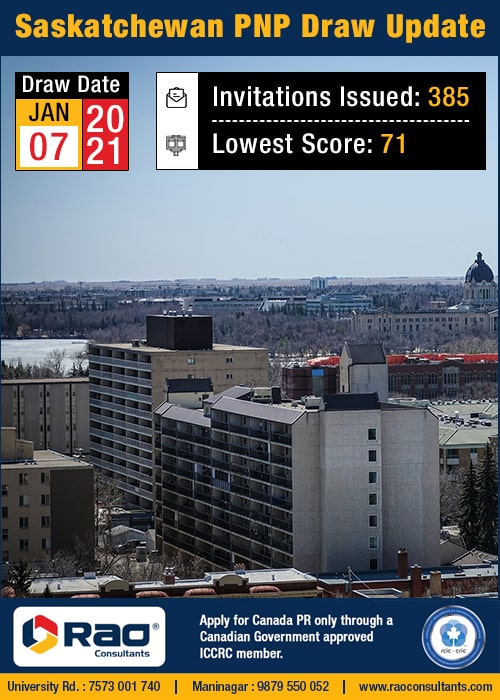The country is best known for its pristine beaches and incredibly popular tourist destinations. It should also be known that Philippines boasts of one of the most accomplished higher education systems in the world as well. The third largest English speaking country in the world, Philippines has made a name for itself in the recent past for its leaps in education.
The country consists of over 7500 islands and has three main geographical divisions – Luzon, Visayas and Mindanao. The capital of the country is Manila and Quezon City is the most populated city in the country. The country shares maritime borders with Taiwan, Vietnam, Palau, Malayasia and Indonesia. The country has a population of over 100 million and is spread over 340,000 kilometers. The island has a number of different ethnicities and nationalities with Christianity being the predominant religion here. It also houses a good number of reputable universities.
The country has one of the most unique biodiversity in the world and is home to some of the rarest flora and fauna on earth. The country’s rainforests, abundant coastlines make this country one of the ten most biologically megadiverse countries in the world. The country has a tropical climate and is hot and humid through the year. There are three main seasons in the country, the hot-dry season from March to May and the rainy season from June to November and the cool dry season from December to February.
The 34th largest economy in the world, Philippines has a GDP of over 348 billion dollars. The country primarily exports electronic products, garments, copper products, transport equipment, petroleum products, fruits and coconut oil. It conducts regular trade with United States, Japan, China, Netherlands, Germany, Thailand, South Korea and Taiwan among a variety of other countries. The country is newly industrialized and was previously a completely agriculture based economy. Agriculture still employs about 30% of the total labour force in the country, while 47% of the workers are employed in the services sector. Tourism contributes more than 7% to the nation’s GDP, making it one of the fastest growing sectors in the country.
The country has almost 2300 institutions of higher education, a large number of which are private. A number of universities in Philippines rank among the best in the world and the best in Asia. The country is specifically known for its high standards of education and teaching in courses such as Medicine, English courses, flight training courses and tourism and hospitality among others. The country enjoys a very high rate of literacy and employs hundreds of thousands of teachers for higher education. These factors make Philippines a good prospect for higher education.
While the top countries sought out for foreign education are US, UK, Australia and Canada, the most popular underdog among these continues to be Philippines. The country has been going from strength to strength in attracting international students and is quickly becoming a much sought after destination for a number of choice courses. Its high potential education system, growing economy and affordable education costs make it a tempting education destination for students the world over.
The country is one of the most culturally diverse regions in Asia, if not the world. Located in South East Asia, the country was a Spanish colony for over 300 years before coming under American rule for 50 years until the World War II. The country has strong catholic Christian roots and the culture is a fine blend of eastern and western influences. The country finds itself bang in the middle of one of the most frequented shipping routes in the world and has absorbed within itself people of a number of different nationalities.
As the third largest English speaking country in the world, Philippines offers great possibilities to students. The medium of education through all the stages is English and it also offers some amazing language and literature courses. Philippines is the only bilingual country in Asia, and to cement this fact it should be known that more than 90% of the nation is literate and fluent in English.
The education system of the country has found itself being ranked among the best in the world. The country has quickly become the most sought after destination for medical courses as well. Graduates from master’s courses in Philippines know that their degrees are recognized all over the world and this opens up a world of opportunities for them. The proximity to countries like China, Japan and Australia only go to reassert the fact that getting jobs is only a matter of putting yourself out there. The country’s education system has exported hundreds of doctors, engineers and many other professionals to work in the US, UK and the Middle East.
There are a number of universities in the country that are ISO certified and umpteen education institutions that are identified as Centers of Development and Centers of Excellence. The country also boasts of a largely low cost of living and education which makes it affordable over and above its excellence in teaching. The country is also akin to a paradise when one considers its huge biodiversity. Home to a wide variety of flora and fauna, in the sea and on the land, the country has a huge number of options for nature lovers.
Being a popular tourist destination, Philippines finds itself as the centre of tourist attention throughout the year. The tropical climate and surreal scenery make it a beautiful location to gain education at. The country has no shortage of wonderful sights for students when they are not busy gaining an education. The most popular universities in the country are located in and around the capital city of Manila. Moreover, the process of obtaining a visa for Philippines is attractively simple and makes for a good change of pace from other education destinations around the world.
The higher education system of Philippines is modelled on the American education system. This includes bachelor’s, master’s and doctoral degrees and students studying higher education are taught by the American Standards. The higher education system employs over 110,000 teachers with master’s and doctoral degrees. There are over 2300 universities and other higher education institutions in the country which have their satellite colleges and institutions around the country. A majority of these colleges are private, there are public schools as well over and above 110 state universities in the country.
The tuition fees at these institutions are generally low and all the higher education institutions are administered and regulated by Commission on Higher Education (CHED). Education institutions in Philippines run on a semester system and the first semester usually begins in June and goes on up to October. The second semester starts in November and runs through to April, both semesters have one week of exams after the semester ends.
Colleges and universities in the country offer a wide array of courses. These include, engineering, sciences, liberal arts, nursing, hotel management, tourism, and information technology, among a variety of others. Local universities, however, have less stringent requirements of operations and need to run a minimum of five undergraduate programmes and two post graduate programmes. Private universities need to be operating eight undergraduate programmes to gain recognition.
The first priority for students is to select the perfect course and institution for themselves. Following this, we, at Rao Consultants, establish contact with the university and extract all the essential information including cost of education, accommodation and visa procedures among other things. It must be noted that students applying for admission to programmes in medical education should not have any bachelor degrees. Students who are applying to schools in Philippines are required to take the NMAT. Students need to enrol for pre-medical programmes if they haven’t given the NMAT. The test is administered by the Centre for Education Measurement Inc. (CEM) as authorized by the Commission on Higher Education (CHED).
You will need to have all your documents verified by the Ministry of External Affairs of India when you are applying. We, at Rao Consultants, will ensure that you do not miss out on any documents when you are submitting your application for studying at the university and course of your choice in Philippines.
Philippines has one of the most affordable higher education systems in Asia and the world. The country also has a substantially comfortable standard of living and the same is highly affordable as well. Generally, the overall cost for education will be something between 10,000 to 12,000 American dollars. This, however, will vary depending upon your course, university, and the area you live in. The cost of living in Philippines is comparatively far more affordable than other countries in Asia.
Students have the options of staying in hostels, however, a majority of students prefer to live in rented flats and shared apartments near their colleges and universities. The currency of Philippines is the Philippine Peso and it converts at about 1.24 Indian rupees. Monthly rent can range from 200 to 500 American dollars. Food is extremely affordable and if you want to buy groceries supermarkets can provide you some incredibly cheap and healthy food options.
Once you have garnered a confirmation for your application to the university of choice in Philippines you can apply for a student visa. You need to be at least 18 to enter Philippines and have the means to provide for yourself and study in the country. The school that you have applied to will forward your application package to the Commission of Higher Education (CHED) for approval. Once CHED has approved of your application it will be sent to the Bureau of Immigration and Deportation (BID) and will then be sent to the Department of Foreign Affairs (DFA). The DFA will inform the Philippine Embassy to issue the student visa. The embassy will then inform the student accordingly.
You need to have the following documents to apply for a student visa to Philippines:
- Two originals of the application form
- Original passport not valid for less than six months beyond the intended stay period in the country
- Original and photocopy of the birth certificate that is verified and authenticated by the Philippine Embassy
- Original and photocopy of the affidavit of support executed by the parents or legal guardians
- Two copies of parents/guardians’ passport’s data page
- Original and photocopy of the transcript of records
- Original and photocopy of certificate of good moral character
- Original and photocopy of police certificate
- Original and photocopy of medical examination including X-ray
- Personal history statements from the school concerned
- Original and copy of the list of student’s contacts in Philippines
- Diploma degree certificate for students pursuing graduate studies
- Payment of fees to the Embassy of Philippines
International students who wish to enter Philippines can also enter using the temporary visitor’s visa. This can then be converted to student visa or a special study permit (SSP) in Philippines. Rao Consultants helps you prepare for your visa interview keeping in mind all contingencies. This ensures that you are completely at ease and ready with all essential answers during your visa interview.
Philippines has grown over the years in terms of its economy and is one of the fastest growing country in the world. International students who are studying medicine are not allowed to do part time jobs in the country. National Capital Regions like Manila and Makati have a lot of jobs out there but international students may need to spend some time scoping out the job market before they land a job. The best part about getting an international degree from Philippines is that the degree is valid across the world. Keeping this in mind you can apply for a job anywhere in the world.
Are students allowed to cook food in their own hostel rooms?
No. Most universities do not allow students to cook food in their hostel rooms. Some hostels may have the facility of an attached kitchen and all universities have canteens for students.
How is medical education in Philippines?
Medical education in Philippines is considered to be one of the best in the world. The country is the highest exporter of nurses and doctors to the USA in the world. The MBBS program in Philippines is called the MD program and is equal to the MD in USA, MBBS in UK, India, MBBS in Australia, MBBS in Germany, MD in Canada etc. the country has one of the best education systems the world and has a robust structure of teaching prospective doctors.
Will the university refund the fees paid if the admission is cancelled?
Once the student reports to the university and joins it there can be no refund of the fees paid. The decision is entirely up to the university.
Is the cost of living high in Philippines?
Philippines is a highly affordable country to live in. Things like clothes, day to day items, shoes etc. are widely available and can be bought without too much expense. Moreover, things like rent, entertainment, and university fees are also highly affordable.



